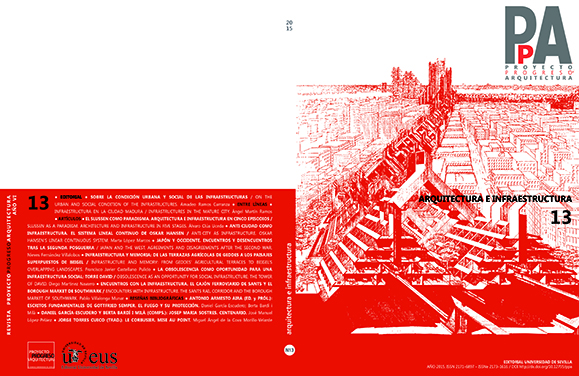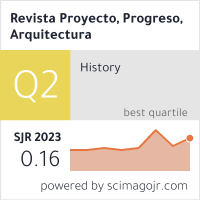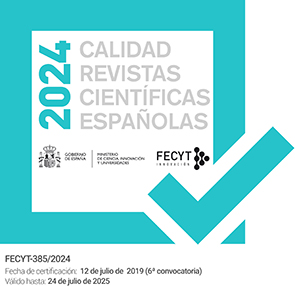JAPÓN Y OCCIDENTE. ENCUENTROS Y DESENCUENTROS TRAS LA SEGUNDA POSGUERRA / Japan and the West. Agreements and disagreements after the Second War
DOI:
https://doi.org/10.12795/ppa.2015.i13.04Keywords:
Smithson, Archigram, Team X, Metabolismo, World Design Conference / Metabolism, World Design ConferenceAbstract
RESUMEN A lo largo del siglo XX la influencia de Japón en la arquitectura occidental ha tenido momentos destacados. Alison y Peter Smithson estudiaron las miradas al mundo japonés de las generaciones precedentes de arquitectos y subrayaron nuevos aspectos a considerar en él, relacionados con la estética de lo desechable y la cultura pop. La vivienda japonesa inspiró conceptualmente algunas de sus utopías domésticas, que influirían de manera especial en el grupo británico Archigram y, a través de ellos, en otros grupos radicales de los años sesenta. Los Smithson jugaron también un papel clave en la disolución de los CIAM en 1959 y en la creación del Team X. En ese último CIAM, participó Kenzo Tange presentando varios proyectos japoneses vanguardistas, dando comienzo a un rico periodo de intercambio de ideas entre occidente y Japón, que continuaría en la World Design Conference de Tokio, en 1960, y en posteriores encuentros del Team X .
En el presente escrito la pareja británica sirve de hilo conductor, por su papel activo y crítico en todos estos encuentros. El artículo analiza esos momentos de conexión para establecer influencias mutuas, críticas, paralelismos y divergencias entre la arquitectura europea, personalizada en los Smithson, Archigram y el Team X, y los Metabolistas Japoneses a través de diversas escalas del diseño, desde lo doméstico a lo urbano.
SUMMARY Throughout the twentieth century, Japanese influence on Western architecture has had outstanding moments. Alison and Peter Smithson studied the gazes toward the Japanese world from previous generations of architects and highlighted new aspects to be considered related to the Throw-away Aesthetic and Pop culture. Japanese dwelling conceptually inspired some of their domestic utopias, which especially influenced the British group Archigram, and through them, other radical groups of the sixties. The Smithsons also played a key role in the dissolution of the CIAM in 1959 and the creation of Team X. Kenzo Tange participated in that last CIAM presenting several Japanese avant-garde projects, ushering in a rich period of exchange of ideas between the West and Japan, which would continue in the World Design Conference in Tokyo in 1960 and in subsequent Team 10 meetings.
In this paper the British couple serves as conductive thread, because of their active and critical role in all these meetings. The article analyzes these moments of connection to establish mutual influences, reviews, parallels and divergences between European architecture, personalized in Smithsons, Archigram and Team X, and Japanese Metabolist through various scales of design, from domestic to urban.
Downloads
References
Alison, Jane et al. (Eds.): Future City: Experiment and Utopia in architecture 1956-2006. Barbican Art Gallery, Londres: Thames & Hudson, 2007.
Archigram: A guide to Archigram 1961-74. Londres: Academy Editions, 1994.
Baker, Jeremy (Ed.): “Special Issue: A Smithson File”. En Arena. Febrero 1966, Nº 899. Londres, the Architectural Association. 1965.
Banham, Reynar: Megaestructuras. Futuro urbano del pasado reciente. Barcelona: Gustavo Gili, 1978.
Banham, Reyner: Design by Choice. Londres: Academy Editions, 1981.
Banham, Reyner y Suzuki, Hiroyuki: Contemporary Architecture of Japan 1958-1984. Londres: The Architectural Press, 1985.
Banham, Reyner: “A clip-on architecture”. En Architectural Design, Noviembre 1965. Londres: Wiley. 1930. pp. 534-535.
Colquhoun, Alan: Modernity in Classical Tradition, Architectural Essays 1980-1987. Cambridge (Massachusetts): MIT Press, 1989.
Cook, Peter: Experimental Architecture. Londres: Studio Vista, 1970.
Fernández Villalobos, Nieves: Utopías Domésticas: La Casa del Futuro de Alison y Peter Smithson. Barcelona: Fundación Caja de Arquitectos, 2013.
Frampton, Kenneth: “New Brutalism and the Welfare State: 1949- 59”. En Finkelpearl, Thomas (Dir.): This is Tomorrow Today. Nueva York: The Institute for Art and Urban Resources, Clocktower, 1987. pp. 47-52.
Franklin Ross, Michael: Beyond Metabolism: The New Japanese Architecture. Nueva York: McGraw-Hill, 1978.
Guiheux, Alain: Kisho Kurokawa architecte: le metabolism 1960-1975. París: Centre George Pompidou, 2000.
Jérome, Mike: “Whatever happened to the Metabolists?”. En Architectural Design. Mayo 1967, Vol. XXXVII, Nº 5. Londres: Wiley. 1930. p. 208.
Kikutake, Kiyonori: Kiyonori Kikutake: from tradition to utopia. Milán: L’Arca, 1997.
Koolhaas, Rem; Obrist, Hans Ulrich: Project Japan. Metabolism Talks. Colonia (Alemania): Taschen, 2011.
Kulterman, Udo: Nueva arquitectura japonesa. Barcelona: Gustavo Gili, 1967.
Kultermann, Udo (Ed.): Kenzo Tange 1946-1969: Arquitectura y Urbanismo. Barcelona: Gustavo Gili, 1970.
Kurokawa, Kisho: Intercultural Architecture. The Philosophy of Symbiosis. Londres: Academy Editions, 1991.
Lin, Zhongjie: Kenzo Tange and the metabolist movement. Urban Utopias of Modern Japan. Nueva York: Routledge. 2010.
Maki, Fumiko: Investigations in collective Form. St Louis: Washington University, Junio, 1964, pp. 1-24.
Maki, Fumiko; Otaka Masato: “Some Thoughts on Collective Form”, Metabolism, 1960. En Kepes, Gyorgy (ed.): Structure in Art and in Science. Londres: Studio Vista, 1965.
Palacios, Luis: “Noah’s Ark: El arte de humanizar del gran número”. En progreso, proyecto, arquitectura. “Gran Escala”. Mayo 2014, Nº 10. Sevilla. Secretariado de Publicaciones. Universidad de Sevilla. 2010. pp. 104-117.
Rodríguez Llera, Ramón: Japón en Occidente. Arquitecturas y Paisajes del imaginario Japonés, del Exotismo a la Modernidad. Valladolid: Universidad de Valladolid, 2012.
Schalk, Meike: “The Architecture of Metabolism. Inventing a Culture of Resilience”. En Arts. 2014, Nº 3. Nueva York: Art Digest, Co. 1926. pp. 279-297.
Smithson, Alison: “The Future of furniture”. En Interior Design Supplement, Architectural Design. April 1958, Vol. XXVIII. Londres: Wiley. 1930. pp. 175-178.
Smithson, Alison & Peter: Urban Structuring: Studies of Alison & Peter Smithson. New York: Reinhold Publishing Corporation, 1967.
Smithson, Alison & Peter: “Densidad, intervalo y Medida”. En La ciudad: Problemas de diseño y estructura. Barcelona: Gustavo Gili, 1970. (Original: Urban Structure. Londres: Elek Books, 1968).
Smithson, Alison and Peter: “But today we collect ads”. En Robbins, David (Ed.): El Independent Group: La postguerra Británica y La estética de la Abundancia. Valencia: Instituto Valenciano de Arte Moderno, 1990, pp.185-186. (Publicado originalmente en Ark (Arkkitehti). 1957, Nº 18. Helsinki: SAFA. 1903. pp. 49-50. También en This is tomorrow today. Nueva York: The Institute for Art and Urban Resources, Clocktower, 1987. pp. 53-56).
Smithson, Alison & Peter: The Charged Void, Architecture. Nueva York: Monacelli Press, 2001.
Smithson, Alison and Peter: Without Rethoric: An Architectural Aesthetic 1955-1972. Cambridge (Massachusetts): The M.I.T. Press, 1974 (1º ed. Londres: Latimer New dimensions Ltd, 1973).
Smithson, Peter: “Refections on Kenzo Tange’s Tokio Bay Plan”, Architectural Design. Octubre 1964. Londres: Wiley. 1930. pp. 429–527.
Smithson, Peter: “Three Generations”. En Alison + Peter Smithson: Italian Thoughts. Estocolmo (Suecia): The Royal Academy of Fine Arts - Sven Ivar and Siri Lind´s Foundation - Peter and Birgitta Celsing´s Foundation, 1993, pp. 9-15. Publicado también en “Rearrangements, a Smithson Celebration”. En Oase. 1999, Nº 51. Rotterdam: NAi 010 Publishers. 1981. pp. 82-93.
Risselada, Max; Van der Heuvel, Dirk (Eds.): Team 10. 1953-81. In search of a Utopia of the present. Rotterdam: Nai Publishers, 2005.
Tafuri, Manfredo; Dal Co, Francesco: Arquitectura contemporánea. Madrid: Aguilar, 1978.
Tange, Kenzo, “Lineage of urban design: special issue”. En The Japan Architect. Septiembre/Octubre 1971, Nº 46. Tokyo, Shinkenchiku-Sha Co. 1956. p. 29.
Taylor, Jennifer: The Architecture of Fumihiko Maki: Space, City, Order and Making. Basel: Birkhäuser, 2003.
Vidotto, Marco: Alison + Peter Smithson. Barcelona: Gustavo Gili, 1997.
Published
How to Cite
Issue
Section
License
Las ediciones impresa y electrónica de esta Revista son editadas por el Secretariado de Publicaciones de la Universidad de Sevilla, siendo necesario citar la procedencia en cualquier reproducción parcial o total.
Salvo indicación contraria, todos los contenidos de la edición electrónica se distribuyen bajo una licencia de uso y distribución “Creative Commons Atribución-NoComercial-SinDerivar 4.0 Internacional” ![]() . Puede consultar desde aquí la versión informativa y el texto legal de la licencia. Esta circunstancia ha de hacerse constar expresamente de esta forma cuando sea necesario.
. Puede consultar desde aquí la versión informativa y el texto legal de la licencia. Esta circunstancia ha de hacerse constar expresamente de esta forma cuando sea necesario.
Los autores/as que publiquen en esta revista aceptan las siguientes condiciones:
- Los autores/as conservan los derechos de autor y ceden a la revista el derecho de la primera publicación, con el trabajo registrado con la licencia de atribución de Creative Commons, que permite a terceros utilizar lo publicado siempre que mencionen la autoría del trabajo y a la primera publicación en esta revista.
- Los autores/as pueden realizar otros acuerdos contractuales independientes y adicionales para la distribución no exclusiva de la versión del artículo publicado en esta revista (p. ej., incluirlo en un repositorio institucional o publicarlo en un libro) siempre que indiquen claramente que el trabajo se publicó por primera vez en esta revista.
- Se permite y recomienda a los autores/as a publicar su trabajo en Internet (por ejemplo en páginas institucionales o personales) antes y durante el proceso de revisión y publicación, ya que puede conducir a intercambios productivos y a una mayor y más rápida difusión del trabajo publicado (vea The Effect of Open Access).









